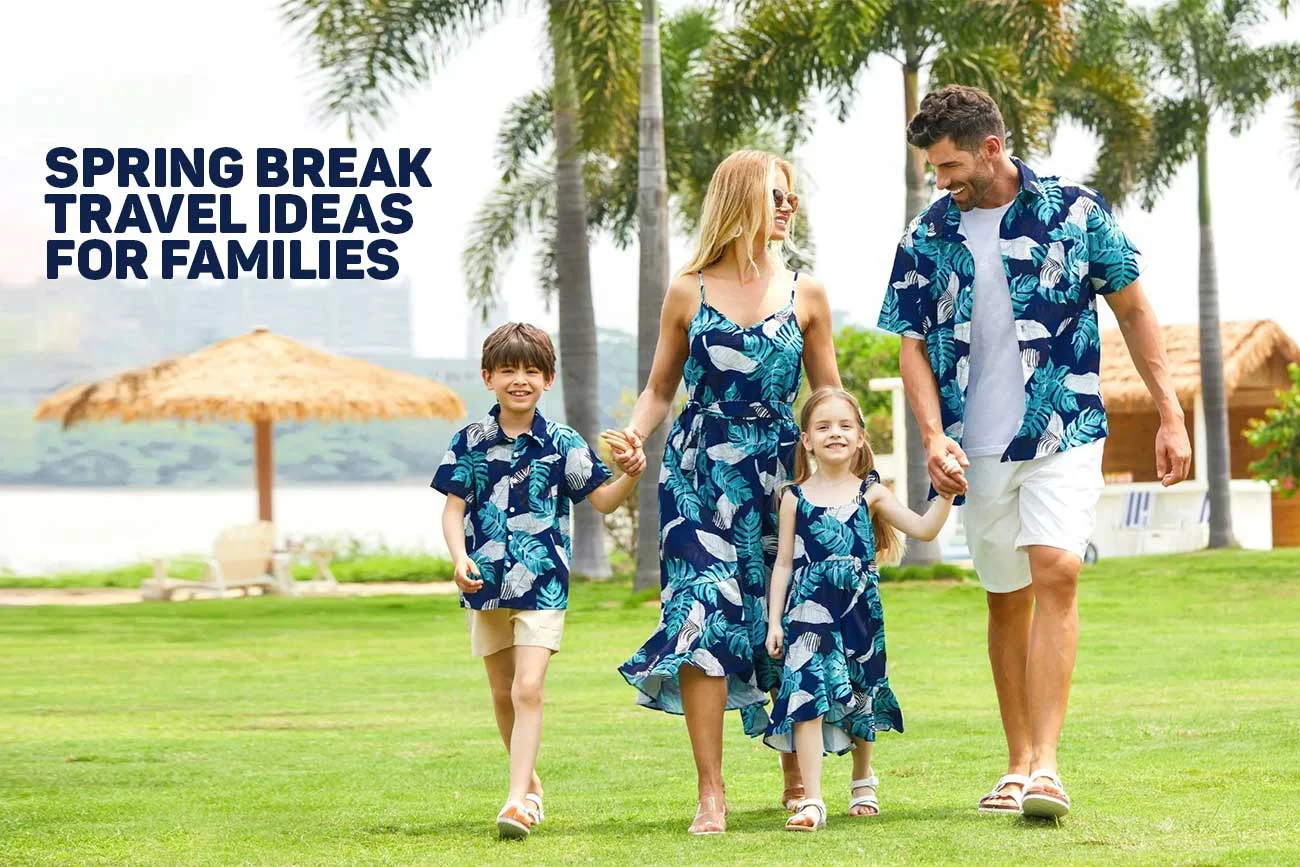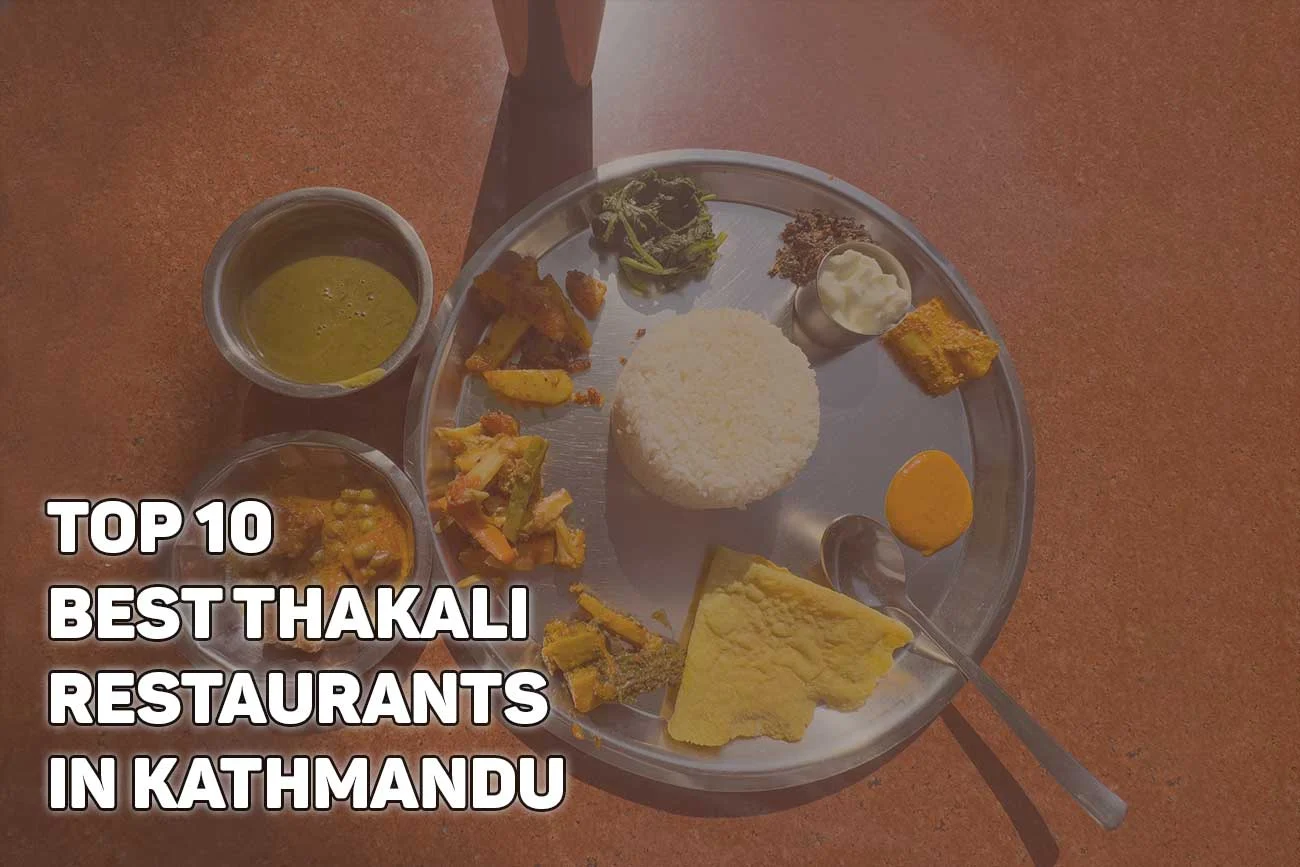Going on trips can teach you a lot and give you great memories, but taking little kids or babies with you can definitely make things more difficult. The key to a stress-free trip is preparation and planning. The following are important tips for travelling with infants and children that will make your trip with kids more enjoyable:
Table of Contents

Important to think ahead.
Before making your travel plans official, you should think about where you want to go, how you’ll get there, and how long the trip will take. Look for places that are good for kids. And if you can, focus on planes that don’t stop or the fastest paths.
Packing is the Top Priorities
Things that you must have in your carry-on are diapers, wipes, baby food or formula, and an extra set of clothes. Expect mistakes and delays that you didn’t see coming.
Bits of Comfort
A favourite toy, a soft blanket, or a cuddly toy can help you feel better. These familiar things can calm down babies and toddlers who are feeling antsy.
Nibbles
Handy nibbles that won’t ruin the food will keep you from getting hungry. Think about small cereals, cookies, veggies, or cookies.
Sync with your sleep schedule
If you can, plan your trip around when your child usually goes to sleep. They might be able to catch some Z’s on the trip, which would make things easier for everyone.
Think about where to sit.
If you’re going to fly, think about where you’d like to sit. Some people like seats near the front because they give them more room for their legs, while others like seats in the back because they make it easier to move around.
Make Sure Lodgings Are Safe When Travelling with Infants
Your child needs to feel safe wherever they are, especially when traveling with a baby. This includes staying at a relative’s house, a vacation rental, or a hotel room. If you think you’ll need them, bring plug covers, a mobile safety gate, or edge guards. These travel with baby tips can ensure their safety.
Important Documents for Travelling with a Baby
Always keep a copy of your child’s birth certificate or visa, especially when traveling with an infant on a trip abroad. Some airlines or customs points may ask for proof of parentage, so always be prepared. Also helpful to prepare travel plan and include all these information.
Put Quality Equipment First
Investing in quality equipment is crucial, especially when considering how to travel with a baby. A cool pram that is easy to fold up can be very helpful. For adventurous parents, a baby harness might work better on busy streets or nature walks.
Plan for Medical Hiccups While Traveling with an Infant
Prepare a basic first-aid kit with bandages, antiseptic wipes, and fever reducers when traveling with a baby. It’s always best to be informed about the medical facilities that are close to your destination.
Accept that Plans Can Change When Traveling with a Toddler
Planning is very helpful, but being able to change your mind is just as useful, especially when traveling with toddlers. Kids can be unpredictable. Be flexible with your plans in case things go off track.
Prepare for Altitude Changes When Travelling with a Baby
When you’re in the air, changes in altitude can be hard on your child’s ears. One helpful tip on how to travel with a baby during flight is to nurse or offer a sip or a snack during the ascent and descent.
Engaging Distractions Are Important When Travelling with Toddlers
For slightly older kids, load up a device with age-appropriate games, TV shows, or movies. This is an essential travel with baby tip. If possible, add tangible items like drawing sets or stickers to the mix.
Maintain a Positive Attitude When Travelling with Infant
A child’s sense of mood is incredibly sharp. They’ll pick up on when you’re nervous. Always maintain a positive attitude when traveling with an infant, even when things don’t go as planned. Remember, these moments, be they highs or lows, are part of your family adventures.
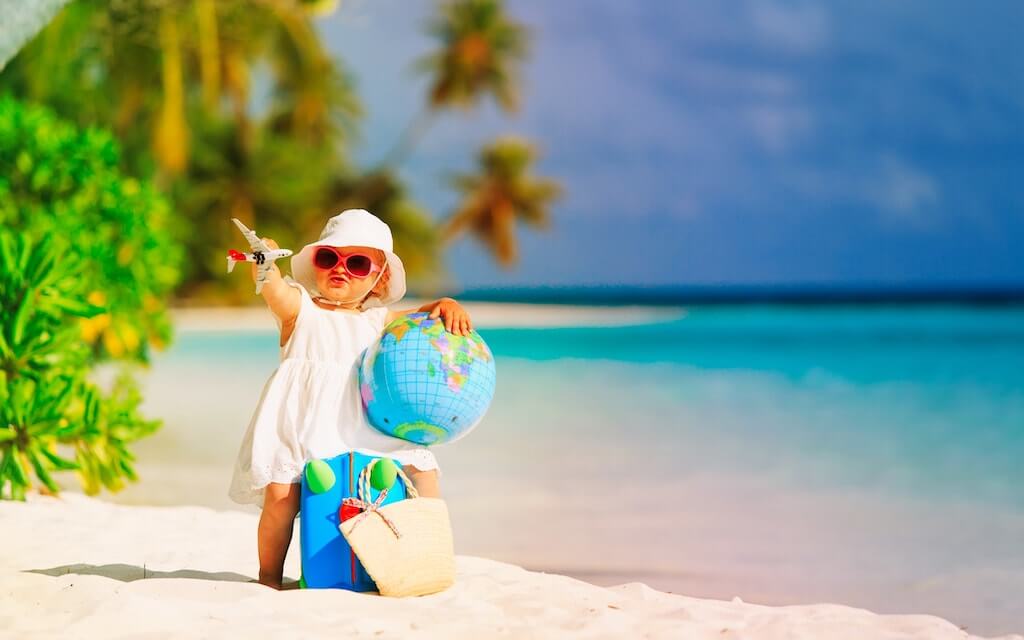
When is it Okay to Take a Baby on a Trip?
It depends! There isn’t a set age when traveling with an infant becomes permissible. Most airlines allow infants to fly after the first few days or weeks, but it varies.
The American Academy of Paediatrics (AAP) advises parents to be cautious about traveling with very young children due to potential exposure to infectious diseases. Most experts recommend waiting until the child is around two months old.
Traveling shortly after giving birth can be exhausting. Managing feedings, diaper changes, and sleep deprivation can be even more challenging in a new environment. However, by the time they are 2 months old, most babies are quite adaptable to traveling, provided the trip isn’t too hectic. They’re content when they’re with you, and there’s the added benefit: they can’t run away and cause mischief!
More tips on how to take a toddler on vacation
1. List the items you need to bring. Take care of your infant at home. Make a list of everything you’ll need, then decide which things are most crucial to have with you when you go. As a certified independent travel expert and the founder of the website Have Infant Will Travel, Corinne McDermott advises parents who wish to take their infant on a flight, even if it’s just for the first time, to prepare ahead of time like a Boy Scout.
2. Assemble a basic medical kit. If you have a minor medical emergency while driving, have all the necessary medical supplies. Even if your child’s prescription medications are only sometimes needed, don’t forget to take them.
3. You must complete an emergency contact form. Note down your child’s medical history, their doctor’s and nurse’s names and phone numbers, and a note of any diseases or medications they are currently taking. Everything you need is conveniently located in one location.
4. Diapers are a huge necessity. Until you can purchase more, you must have at least enough diapers to get you where you’re going. This is true whether you’re on an aircraft, train, or automobile. Packing a few extra items in case your vacation is delayed is a good idea. Don’t forget to include plastic bags for used diapers and diaper rash cream.
5. Don’t forget to pack an extra set of clothes. Don’t stuff your checked baggage to the brim with clothing! Make sure you always have a few clothing for your youngster and at least one additional shirt for yourself. Store them in a convenient location that is simple to access, such as your car, your baby bag, or your carry-on luggage. You never know when a spit-up fit, diaper leak or other mess will occur.
6. Verify that your youngster has received all recommended vaccinations. This is crucial to prevent your infant from being ill while you’re travelling. This plan includes all the information you need to know when your child gets each shot.
7. Consider the strollers that you can purchase. Make sure your pram isn’t too hefty if you want to bring it on flights. Certain varieties may be folded up tiny enough to fit in the space above. If your pram is too large to bring on board, you can check it at the gate or at the ticket desk. The most essential thing for road trips could be what fits in your car. A full-size or running stroller would be preferable if you anticipate doing a lot of walking once you get to your location. The easiest pram to pack is usually an umbrella pram.
8. Get your infant a quality bag. Locate one with just enough pockets to keep you tidy but not so many that you can’t locate anything, he advises. “Double-check you have everything you’ll need in terms of food, formula, diapers, and changing supplies, as well as a change of clothes for you and your baby since accidents can and do happen,” she suggests.
9. Consider a career path. You can navigate the airport with your infant in tow while using a baby sling to free up your hands.
10. Dress your infant in soft materials. Sometimes it’s alright to dress your infant up, but not when you’re going on a trip. Many parents put their infants in blankets or onesies for the trip or car ride to simplify things.
11. Determine which paperwork you need. While children under 18 are not required to present identification for domestic travel, you should still inquire with your employer about the kind of identification they require before taking a baby on a flight.
Certain airlines demand evidence of age for domestic travel, even for young passengers. This might be a passport, birth certificate, or immunisation record. Some may not require identification, but they may require you to print your child’s boarding card at the ticket desk even if they aren’t seated in their own seat. If your trip is international, your youngster will also require a passport.
12. Don’t forget to pack a car seat. If you purchased a baby seat for the airline, remember to include an FAA-approved car seat for your child as well. For children under two, this is the most effective technique to fly. If you didn’t purchase a ticket for your infant, you might be permitted to utilise your car seat on the aircraft if there are available seats.
13. Pack the infant’s meal. Bring as much baby food as you need for the trip if your infant is starting to eat. You may always purchase additional items after you arrive. Suppose you’re travelling overseas or to an area where it can be difficult to get necessities. In that case, it might be simpler to pack extra food. According to the TSA, Food for babies or children in bags or in greater quantities (3.4 ounces or more) is permitted in carry-on luggage.
14. Remember to pack feeding supplies. It’s ideal to pack bibs that are large enough to fit over the majority of your baby’s clothing, easily wiped clean, and foldable or rollable for convenient storage. Additionally, you want to include some baby-sized plates and utensils.
15. Pack the items you’ll need for nursing. Make sure your carry-on has everything you typically need to nurse, including nursing pads, if you’re nursing. If you’re pumping, don’t forget to pack all of your pump components, and if you’re travelling overseas, find out whether you need any adapters.
16. Be prepared for painful ears. In case your baby’s ears become sore due to the variations in air pressure during takeoff and landing, suggest that they breastfeed or use a bottle, pacifier, or sippy cup. “I recommend feeding or nursing your baby during this time because swallowing helps relieve the pressure,” says Dr. DeZure. “It can be very painful for babies, so expect them to be fussy and cry, but their ears will adjust once the pressure levels off in the sky or on the ground.”
17. Don’t forget to pack a blanket. When you’re at a rest stop or airport, you may provide your baby with a comfortable space to crawl, roll over, or lie down with a blanket. Since flights may become cold, it’s also a good idea to bring a blanket.
18. Bring enjoyable activities. Generally speaking, as the infant gets bigger, you’ll need to add more fun. Stuff a goody bag with gifts and some of your baby’s favourite toys. Babies-safe mirrors, plastic keys, chewing rings, pop-up toys, soft animals, rattles, and singing toys are a few alternatives.
19. Prepare to change the child’s nappy. Changing a baby’s nappy while flying can be stressful, but you can simplify the process by preparing ahead of time. According to McDermott, assemble a little bag containing a few fresh diapers, wipes, a little changing pad (or a disposable one), and a plastic bag to hold used diapers and wipes. If there’s no changing table in the restroom on the aircraft, you’ll have to use the closed toilet seat or, if necessary, your seat. If you change your baby’s nappies as soon as you board the plane, you might not need to change it as frequently.
20. Decide where your child will sleep. When making a reservation for a hotel room or vacation rental, find out if there is a play area or cot available. You can bring your own play yard or portable cot, or you can hire anything as long as it complies with the AAP’s safe sleep criteria. When visiting relatives or staying in a hotel, for example, or when a property may not be childproof, a play yard can be immediately set up.
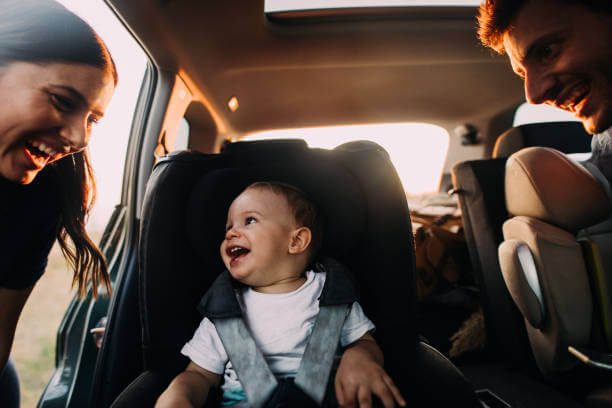
Additional advice when travelling with larger children
Many of the preceding suggestions still hold true while travelling with young children, preschoolers, and school-aged children. For instance, you’ll still need to pack enjoyable activities and a first-aid kit. However, there are a few particular considerations to make when taking older children on a trip.
1. Pack an abundance of toys and activities. Some excellent options include stickers, tiny animals, automobiles, colouring books, Slinkys, tiny fidget toys, and “I Spy” books.
2. Get their meds ready. Ensure that your child’s tablet is loaded with several Wi-Fi-free apps, audiobooks, movies, and music. Also, before leaving the house, ensure the downloading is finished! Children under the age of two shouldn’t use screens, according to the AAP, but they also acknowledge that “desperate times can sometimes call for desperate measures.”
3. Remember to bring the car seat. Before you drive, make sure your child’s car seat still fits properly. Should they have expanded lately, adjustments could be necessary. Bringing a car seat on board remains the best option for newborns and preschoolers weighing less than forty pounds. Children weighing between 20 and 40 pounds should use a forward-facing car seat that has been certified by the Federal Aviation Administration (FAA), and children weighing between 22 and 44 pounds should use a CARES harness.
4. Consider your sleeping arrangements. Before you go, make plans for your child’s sleeping arrangements when you arrive there. Children and older kids typically sleep nicely in pull-out sofas or twin beds. However, a play yard or a portable cot will be necessary for a baby who still uses a cot at home. Many hotels and vacation rental properties provide these; however, ensure that the equipment they provide complies with the American Academy of Paediatrics’ safe sleep guidelines and has not been recalled.
5. Gift ideas wrapped. Your child will enjoy the journey more if you give them some modest wrapped presents from the dollar shop to open. Kids may enjoy themselves again with toys they haven’t used in a long time. For a short while, it’s also entertaining to just take anything out of the box.
6. You need to bring chargers. Ensure that all of your child’s devices have charging cables, and keep them handy. Make sure you pack any plugs you might need if you’re travelling overseas. If your child’s tablet dies during a crucial event, such as a lengthy line at customs or security, portable chargers can come to the rescue.
7. Schedule time for potty breaks. Consider your travel plans more carefully if your child is still using a toilet seat or is in the midst of potty training. You have options while you’re on the road with portable toilet chairs. A few of them may be conveniently folded up to fit in a carry-on bag. Furthermore, it’s a good idea to have a few extra diapers or pull-ups on hand in case of an emergency, particularly if you’re going to be away from home for the night. Even if your child is almost done using them, though. It’s also critical to have spare clothing in case of an accident.
8. Pack more snacks than you anticipate needing. A healthy balance of fresh fruit, protein, and carbohydrates can help youngsters stay energetic and prevent tantrums. Some suggestions include fruits, nuts, crackers, pre-wrapped cheese, yoghurt boxes, little muffins, banana bread pieces, cooked veggies, pretzels, cereal bars, dried fruit, cucumber sticks, and puffed snacks. Stuff that has to stay cold ought to go in a little cooler bag. Fast-deteriorating items have to be distributed first.
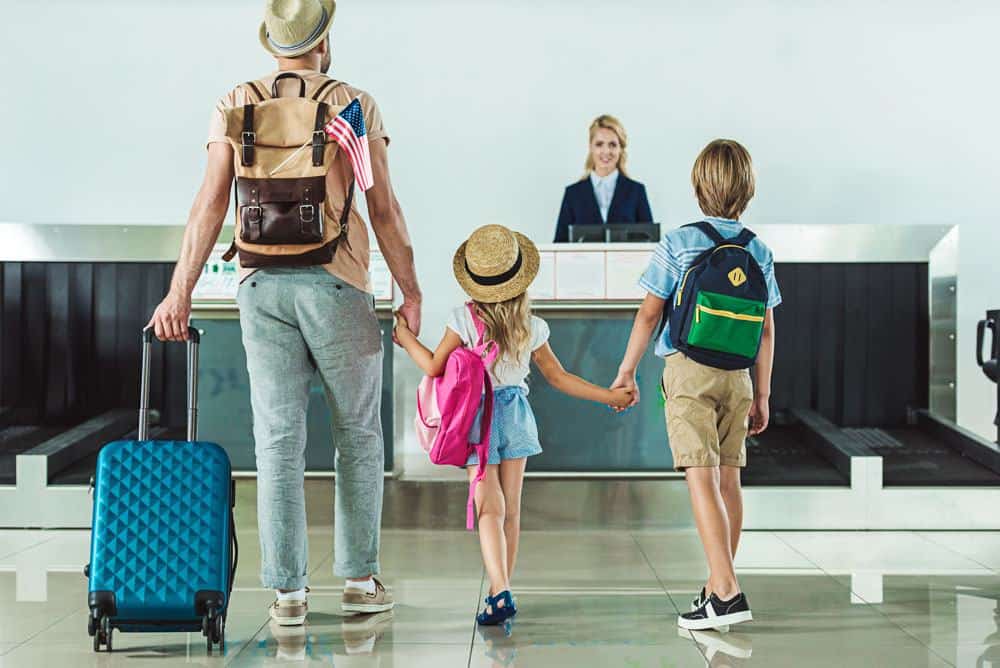
9. Don’t forget to pack glasses and water. Fortunately, compared to newborns, older kids and toddlers don’t require as many portable food items. However, basic items like food cases, water bottles, and baby cups are still helpful. For example, it’s wise to pack everything your child is used to, as you never know what type of drinking cups your hotel or rental property will have.
10. Don’t forget to pack items of solace. When you arrive at your location, your kid will feel more at peace if they have trusted comfort objects with them, such as a lovey or a blanket that have special meaning for them.
11. Prepare yourself for tantrums. “By this time, you know your kid and their triggers for outbursts, so it’s a little easier to both prepare for them and avoid them,” says McDermott. She recommends that you discuss the enjoyment of travelling with your child and lay out a general itinerary for them to follow before the trip. “Also, let them know the kind of behaviour that’s expected during your journey and model it yourself,” she adds.
12. Keep pushing forward. Though many families that travel frequently feel that it’s preferable to continue travelling rather than stopping when necessary, you should still arrange for plenty of rest stops along your trip. “The best piece of advice on road trips with children is to keep driving if they’re happy or quiet,” adds McDermott. “Even if you’ve completely mapped out the best rest stops or roadside cafes, unless you’ll run out of gas or your bladder will literally burst, if the kids are comfortable and not complaining, keep going for as long as you can.”
13. Keep enjoyable games for the ride. Although driving is hectic, it’s also a terrific way to spend quality time with your children. You’re stranded in a car together, after all! These family-friendly driving games are sure to please everyone.
14. Take care to avoid being ill when you move. Children can experience motion sickness in a variety of ways, including during turbulence on an aeroplane. If you suspect your child is experiencing motion sickness, have them look up from their displays and, if possible, stare forward at a point in the distance. They may get agitated and lose interest in food. If your kid has frequent vomiting fits, have an emergency kit on available that includes spare clothing, wipes, paper towels, and bags for used clothing.
Tips to pack for a trip with a baby
- A lot of extra clothes, like pyjamas, hats, socks, jackets, onesies, and bibs
- A change pad that you can take with you or throw away that you can use in public or aeroplane bathrooms
- Lots of extra wipes and diapers
- Big plastic bags that can be closed again and again to store dirty things like diapers, clothes, and bibs
- A baby sling or carrier
- A car seat for babies, if they have their own seat on the plane
- If you feed your baby with a bottle, spare bottles
- There should be a lot of formula if your baby is fed formula.
- If you’re pumping, a breast pump and all of its parts.
- Any of the things you normally need to breastfeed, like nursing pads
- If your child has started eating foods, bring extra snacks.
- a sippy cup for little kids
- Extra teethers or pacifiers for your baby if he or she uses them
- If your child likes them, swaddle blankets or sleep sacks
- A bigger rug to play on
- Toys, soft books, and small loveys
- A pram or movable play yard
- Sheets for a cot or baby
- A first-aid kit with a thermometer and pain relievers for babies
- Things you need for personal care, like nappy rash cream and sunscreen
- If you’re going to another country, your baby’s ticket.
- How to pack for a trip with a baby or child
- There should be a lot of extra clothes, like pyjamas, hats, socks, sweaters and pants (if your child is potty-trained).
- Bring extra diapers and wipes if your child isn’t toilet-trained yet.
- If your child isn’t potty-trained yet, a compact changing pad that you can use in public or aeroplane bathrooms.
- A movable potty seat if your kid knows how to use the bathroom outside
- Big plastic bags that can be closed again and again to store dirty things like diapers and clothes
- More snacks
- A bottle or one-piece cup
- If your kid has one, a favourite toy animal, lovey, or comfort item
- A small blanket to keep you warm on cold planes
- Fun things to do include small toys or cheap items from the dollar store.
- Five or six small books (paperbacks are easy to carry)
- Things like electronics, charging cords, and travel chargers
- A pram or movable play yard
- If they have their own place on the plane, a car seat
- things they need for personal care, like toothpaste, sunscreen, diaper rash cream and their toothbrush
- A first-aid kit with a temperature and pain relievers for kids
- If you’re going to another country, your child’s passport.
Conclusion
When travelling with babies and children, you need to be ready, understand, and be able to move quickly. If you keep a positive attitude and bring the right things with you, your trips can go from being a hassle to a memory you’ll always treasure. Cheers to nice trips!




